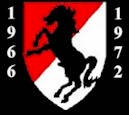|
The Use Of ArmorIn Vietnam
Home | Photos |Facebook| Taps
HonorRoll | Base Camp | Reunions
Absent Comrades | Contributor's Corner
by Brian Ross
Attitudes Toward
The Use Of ArmorEssentially, all the combatants in the Vietnam War, who used armor, except perhaps the ARVN, did so reluctantly. It simply did not fit the viewpoint present in any of the high commands as to what sort of war Vietnam was perceived as.
Indeed Dunstan makes the point that the first deployment of US armor to Vietnam was by mistake when Marines were dispatched to help secure the Da Nang airbase following a Viet Cong mortar attack which had damaged and destroyed several USAF B57 Canberra bombers. It seems that MACV (Military Assistance Command Vietnam) had not studied the composition of a Marine Battalion Landing Team and the arrival of the integral armor of that unit had been greeted with some consternation. Indeed the US Ambassador (who was defacto commander of the US war effort in Vietnam) deemed them to be "not appropriate for counter-insurgency operations"(1) The Marines on the other hand did not see any reason why they shouldn't have been brought and so the first US deployment of armor was by default rather than by design.
The next deployment of Armor (tanks as against APC's that is), did not occur until the arrival of the 1st Infantry Division ("the Big Red One") in-country in late 1965. Up until that point, each US Armored and Cavalry unit which had arrived as part of the deployment of its parent division had swapped its tanks for APC's, usually in the form of ACAV's (Armored Cavalry Assault Vehicles) or if Mechanized Infantry its APC's to become leg infantry. It was at the insistence of General Johnston, the US Army Chief of Staff that the Divisional Cavalry Squadron should keep its medium tanks so as to test the feasibility of the use of tanks in Vietnam. If it performed well, then it would be possible to reinforce it to full battalion strength, if it failed, then the reverse would also be easily achieved with it becoming simply another APC mounted unit.(2)
General Westmoreland, commander of MACV's reply to this decision was that, "except for a few coastal areas, most notably in the I Corps area, Vietnam is no place for either tank or mechanized infantry units."(3) Indeed, even though it was against the wishes of the Chief of Staff, the 1st Infantry Division's Cavalry Squadron's tanks were kept at Phu Loi, and it took six months of hard arguing to convince Westmoreland that his "no tanks in the jungle" attitude was wrong before they were released for general use.
While the 1st Infantry Division had led the way, it was not really until the arrival of the 25th Infantry Division and its forceful commander, Major-General Weyand who insisted, despite resistance from both the Department of the Army and MACV, that his division would deploy complete with all its armor elements intact, that the US Army really started to make use of both tanks and APC's in a combined arms role.(4)
This attitude though, was one which was to persist for many years, until the armor enthusiasts had finally proven their detractors wrong. Indeed, by 1969, after the Tet Offensive of 1968, General Westmoreland had been so turned around by the successes enjoyed by the armored units during the defeat of that offensive that he requested that all future reinforcements be armored, rather than infantry.
Even amongst the Australians this attitude was prevalent. The infantry was considered "Queen of the Battlefield" with all other arms supporting her in her efforts. So much so that the Sydney Morning Herald's editorial questioned the announcement of the deployment of the first squadron of Centurion tanks to Vietnam in 1967 by asking if they were to be used as "mobile pill-boxes" as no other use could be foreseen for them in a counter-insurgency war.(5)
However, within the Army already deployed in Vietnam, the attitudes were somewhat different with the commanders of the 1st Australian Task Force (1ATF), and Australian Forces Vietnam (AFV), Brigadier Jackson and Major-General Vincent respectively both pressing for the early deployment of tanks to bolster the Australian forces in Vietnam. Army Headquarters though, had different ideas, despite the evidence of the use of tanks by the US forces already present in Vietnam. Vincent however demanded that tanks be given a higher priority. They were needed because, he said, the infantry were relatively ineffective in `search' operations without the quick, responsive close fire support which can be provided only by tanks.(6)
Amongst the "Free World" nations only it could be claimed that the ARVN (Army of the Republic of Vietnam) could be said to have been most willing to accept the role of armor in their war from the very beginning. However, they were severely handicapped because of their dependence upon the US Army for both advisers and equipment. With the already mentioned prevailing attitudes in the US Army during the first half of the war, it was not surprising therefore that it wasn't until after the 1968 Tet offensive that the ARVN received their first medium tanks (M48a3's). Before then, they had been intentionally limited by the US Army to only possessing light tanks (M24's initially and M41's for most of the war) and APC's (M3 half-tracks initially and then primarily M113's) which of course reduced their effectiveness.
In addition, the ARVN was hampered by the uses (or rather misuses) that the various political and military leaders put their armored units to. The main contribution that ARVN armored units made to the war before approximately 1967 was that of a securer of political power. They were used in the long running series of coups and counter-coups which rocked Saigon from the fall of Diem in 1963 and the arrival of the US military on the scene in real strength in 1966. This misuse earned for them the ironic nickname "voting machines" amongst the Vietnamese.(7) So paranoid were the ARVN commander's vying for control of the country in the various juntas which formed and reformed in the period that the ARVN tank units were always kept within a day's march or less of the capital, Saigon and were forbidden to carry out any maneuvers in the direction of the Capital.
This paranoia was so severe that apparently one evening when US advisers were delivering new M41 tanks after midnight to avoid Saigon's normally chaotic traffic, the then dictator General Khanh was so alarmed that he fled to Vung Tau, over 50 kilometers away.(8) Air-Marshal Ky, not to be outdone by his army counterparts managed to secure a squadron of M24 Chaffee light tanks for use by the RVNAF at Tan Son Nhut airbase (these were in fact the last M24's in RVN service).
Now we must turn to the Vietnam People's Army (VPA) or North Vietnamese regular Army (NVA) if you prefer the American nomenclature. Even the VPA was reluctant to make use of Armor because of the obvious difficulties of trying to move the vehicles down the Ho Chi Minh Trail from North Vietnam, as well as keeping them supplied. Indeed, reading the accounts of how they apparently moved some of these vehicles over the difficult terrain so that they could be use in South Vietnam seems fantastic (the PT76's used in the attack on the Lang Vei Special Forces camp near Khe Sanh were apparently carried intact over some sections of difficult terrain and floated down rivers on log rafts poled along, according to some US intelligence sources).(9)
While the initial response to the introduction of armor to the battlefield by the "Free World" forces from the NLF (National Liberation Front or Viet Cong) and VPA was to increase the quantity and types of infantry AT weapons available to their forces in the field this was only a temporary. Despite their rhetoric to the contrary, the communist commanders were only too well aware that it takes a very brave man indeed to hunt down a tank with an RPG in the middle of a battle. That, coupled with the relative ineffectiveness of the weapons at their disposal meant problems. Dunstan quotes from a US Army report that M113's sustained approximately,
one penetration for every seven RPG hits. Hits in themselves averaged about one in eight to ten rounds fired due to the inherent inaccuracy of the weapon. M41a3 penetrations were proportionally less because of its superior ballistic configuration as compared to the slab-sided M113. Statistical analysis reveals that only one vehicle was destroyed for every seven penetrations and casualties were 0.8 per penetration.(10)
Apparently, even the heavier recoilless rifles which the NLF and VPA often fielded in their larger formations were nearly as ineffective.(11) Nevertheless, these simple and effective weapons were a constant and serious threat, as were the more effective mines, on the battlefield.
However, with the increasing use of armor by ARVN and allied forces, it was obvious to the VPA and perhaps more importantly their Soviet and Chinese advisers, that the best counter was their own armored vehicles. An additional consideration surely would have been that already the opposition had demonstrated the power of armored units to destroy VPA/NLF units whenever they encountered them. With the changing nature of the conflict from stage 2 (guerrilla warfare) of Giap's and Mao's classic "People's War" to that of stage 3 (open conflict) then the VPA would also need the striking power that only armor could bring to a battlefield.
The VPA though, had a considerable distance to catch up, compared with the ARVN and the allied forces opposing them, in gaining the experience necessary to make effective use of armor. They turned to the USSR for aid and were provided apparently with training facilities to gain that experience inside the Soviet Union. One commentator has suggested that the successes of the VPA in 1975 with the use of armored units were initially learnt on the "steppes of Odessa," information which was apparently gleaned from the interrogation of VPA tank crew after the 1972 Easter Offensive (which revealed that approximately 3000 of them had been trained at Soviet Armor schools).(12)
However, the VPA evolved its own doctrines on the use of armor which ran contrary to that of both its opposition and its main advisers the Soviets in that the North Vietnamese did not, according to Starry:
advocate the use of tanks in mass. Its doctrine stated that armor would be employed during an attack, when feasible, to reduce infantry casualties; however, only the minimum number of tanks required to accomplish the mission would be used. Battle drill dictated that lead tanks were to advance, firing and to be supported by fire from other tanks and from artillery. Close coordination between tanks and supporting infantry was stressed as a key to success in the attack.(13)
Even so, it is obvious that the VPA use of armor was at first stumbling but as confidence grew, by 1975 it had a unique experience base to draw upon. So much so, that by the time of the Vietnamese invasion of Cambodia in 1979, the VPA was able to conduct a classic "blitzkrieg" style of invasion and carry it to fruition with relatively few casualties.
page 1 of 3
Home | Base Camp | Photos |
Guest Book | Taps | Contributor's Corner
Honor Roll | Links | Feed Back | Reunions | Search | Site Map


